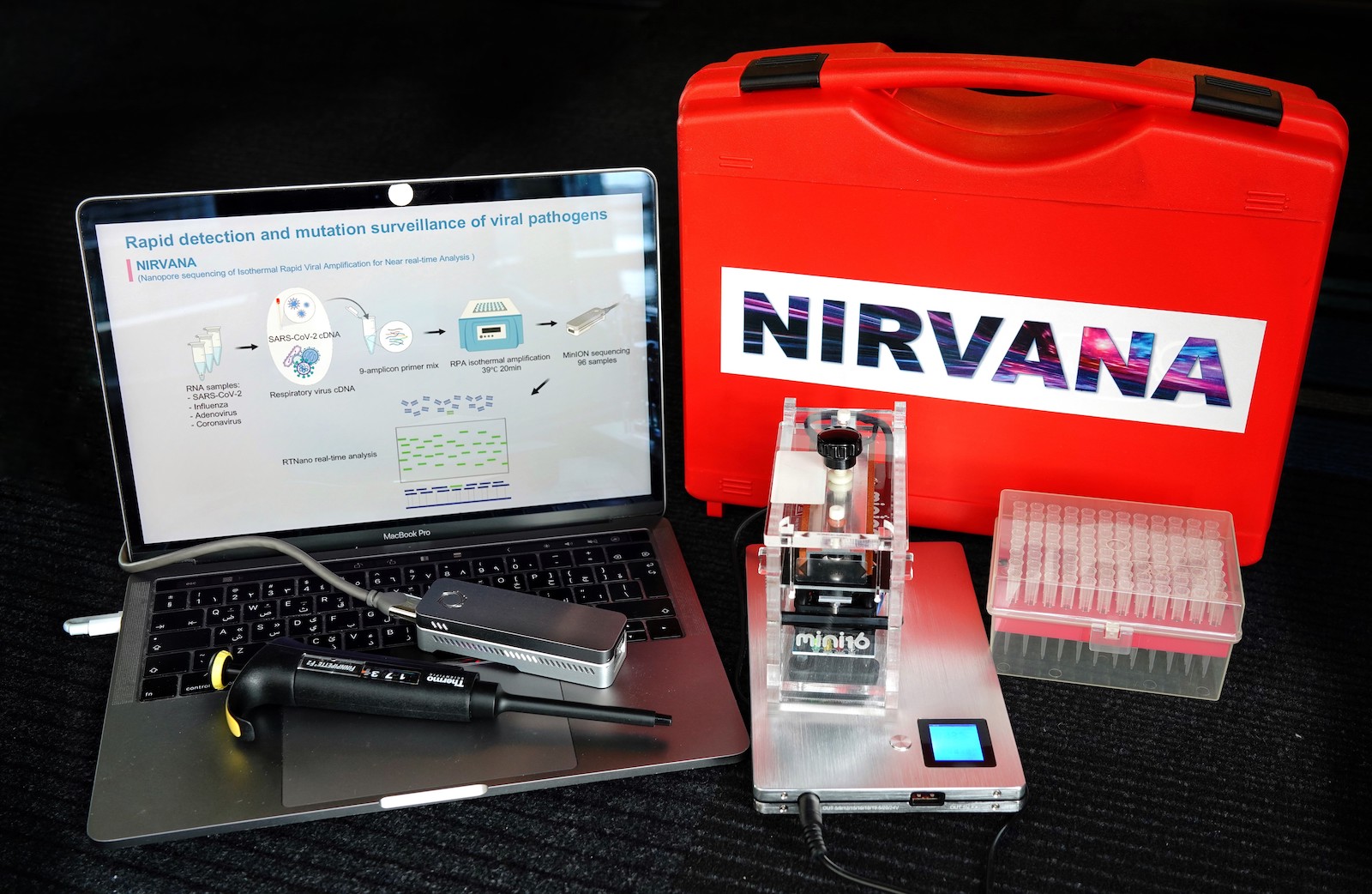Portable COVID-19 test revolutionizes detection

A global research team led by KAUST has developed a new test that detects and sequences the SARS-CoV-2 virus in minutes using a portable, briefcase-sized machine. File photo.
A global research team led by KAUST has developed a new test that can simultaneously detect and sequence SARS-CoV-2—the virus that causes COVID-19—influenza and other viruses in minutes using a portable, briefcase-sized machine. The test looks to revolutionize virus detection in ways that will aid the fight against pandemics.
Named NIRVANA, the test is the product of an exciting collaboration between KAUST, the Salk Institute, the Saudi Ministry of Health (MoH) and a number of Saudi university partners.
"We realized that we could use this technique to not only detect SARS-CoV-2, but also other viruses at the same time," said Mo Li, assistant professor of bioscience at KAUST.
Li spent six years as a Salk postdoctoral researcher in the Izpisua Belmonte Lab. In the summer of 2020, he pondered ways to lend his expertise in genetic engineering to combatting the COVID-19 pandemic. He wondered whether a gene detection and sequencing approach called isothermal recombinase amplification (RPA) might be faster, cheaper and more portable than the current COVID-19 testing approach.
Li worked closely with Izpisua Belmonte scientists to design NIRVANA to simultaneously test samples for COVID-19, influenza A, human adenovirus and non-SARS-CoV-2 human coronavirus. The team tested NIRVANA on 10 samples known to be positive for SARS-CoV-2, 60 samples of unknown SARS-CoV-2 status, and samples of municipal wastewater harboring the SARS-COV-2 virus as well as other viruses. In all cases, the test correctly identified which viruses were present. The sequencing data also allowed them to narrow down the origin of SARS-CoV-2 in positive samples, differentiating strains from China and Europe, for instance.
"This is a virus detection and surveillance method that doesn't require an expensive infrastructure like other approaches," said Juan Carlos Izpisua Belmonte, co-corresponding author and a professor in Salk's Gene Expression Laboratory. "We can accomplish with one portable test what others are doing with two or three different tests and machines."
More than 100 million people around the world have been infected with SARS-CoV-2. Testing the population is key to stopping the spread of the virus. In addition, tracking the spread of new SARS-CoV-2 variants—some of which could respond differently to treatments or vaccines—is critical.
With the small size and portability of the NIRVANA device, it could be used for fast virus detection at schools, airports or ports, the researchers said. It could also be used to monitor wastewater or streams for the presence of new viruses.
"The design of this assay is really flexible, so it's not just limited to the examples we've shown," Li said. "We can easily adapt it to tackle other pathogens, even new and emergent ones."
Today, the standard approach to determining whether a nasal swab is positive for COVID-19 is to run a polymerase chain reaction (PCR) test to detect genetic material from the SARS-CoV-2 virus. If the sample is negative, patients and clinicians don't get any information on what might be causing the coronavirus-like symptoms. To know that, they must run separate PCR tests using different swab samples for other viruses.
If the sample is positive for SARS-CoV-2, they still don't learn which COVID-19 variant is infecting a patient unless another set of tests are run—testing that requires a large and expensive, next-generation gene-sequencing machine.
Unlike PCR, which cycles through lower and higher temperatures to separate DNA strands and copy them, RPA uses proteins rather than temperature changes to accomplish the same thing. The technology lets researchers copy longer stretches of DNA, and probe for multiple genes at the same time.
The researchers developed the technology with the goal of commercialization. According to Belmonte, market analysis is needed to assess the overall merits of the test against the cost of commercialization.
Related
- Publication: Simultaneous Detection and Mutation Surveillance of SARS-CoV-2 and co-infections of multiple respiratory viruses by Rapid field-deployable sequencing
- KAUST 2019 Winter Enrichment Program keynote address:
What makes the human aging clock tick?

